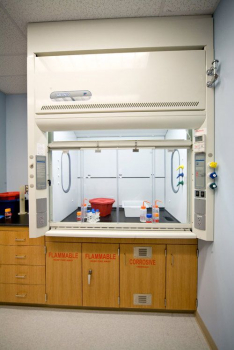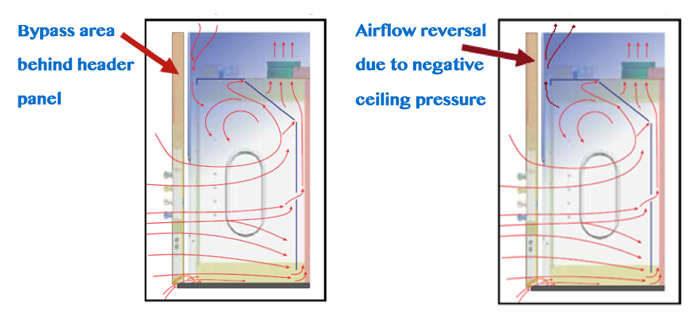Ceiling Enclosures and Negative Ceiling Pressure
 Ductwork comes with the territory when purchasing a typical ducted fume hood. Designers sometimes choose to cover the duct with panels called ceiling enclosures. These panels make the fume hood appear as if the top of the fume hood goes all the way to the ceiling, essentially covering the duct work (see image at right).
Ductwork comes with the territory when purchasing a typical ducted fume hood. Designers sometimes choose to cover the duct with panels called ceiling enclosures. These panels make the fume hood appear as if the top of the fume hood goes all the way to the ceiling, essentially covering the duct work (see image at right).
Most modern fume hoods are designed with a bypass area behind the header panel, which allows air to enter the fume hood through a plenum (or air passage). If the fume hood is designed to allow the area within the ceiling enclosure to be exposed to the open plenum above, and that plenum is under negative air pressure, it could pull contaminated air from within the fume hood up into the plenum, instead of allowing the air to enter through the by-pass area as intended. This will create a problem with airflow and containment within the fume hood due to reverse airflow at the top of the hood (see diagrams below).
SYMPTOM: Airflow cannot reach required level, or the airflow monitor goes into alarm for unknown reason.
SOLUTION: Find another source of supply air for the negative ceiling pressure by removing ceiling tiles, or creating a vent elsewhere.

Return to the main article, "3 reasons your fume hood isn't working as it should".
| chevron_left | The “Ugly Ducting” Layout | Articles | Sample prep: What to use & why to use it | chevron_right |






